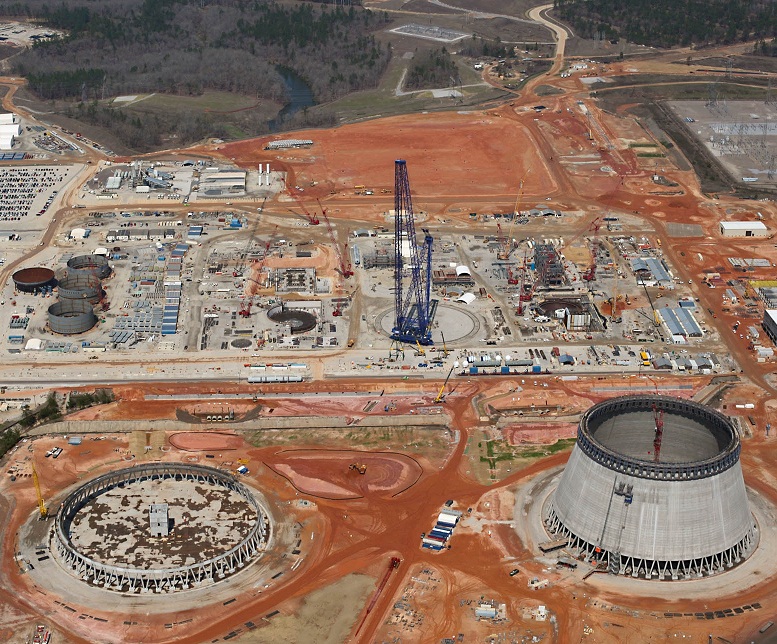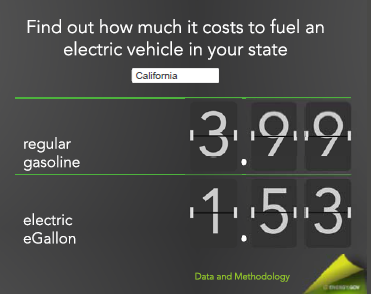Those of us who have been railing on the government's increasing push to make massive loan guarantees available to individual energy firms are not surprised to see the first major bankruptcy. Solyndra went down with $535 million in federal guarantees for lots of reasons. The marketplace is increasingly competitive. Power prices have fallen due to recession and fracking-induced reductions in the cost of natural gas. China subsidizes its solar production, artificially manipulates exchange rates, and there is a growing supply overhang as PV subsidies in Europe get cut. New technologies look to be better than Solyndra's. John Hudson in The Atlantic's blog provides a nice overview of the political hemming and hawing as the parties try to frame the issue to protect their interests.
 Though all of these reasons are plausible contributors to the demise of Solyndra, they are hardly surprise risks. Operational problems, competitors, changes in market conditions: all are baseline risks for any type of new investment that a venture capital firm might take on.
Though all of these reasons are plausible contributors to the demise of Solyndra, they are hardly surprise risks. Operational problems, competitors, changes in market conditions: all are baseline risks for any type of new investment that a venture capital firm might take on.
The difference isn't the nature of the risks, but rather the nature of the investor -- the federal government, straying far from its domain of demonstrated competance. This is the core issue I see in the Solyndra situation, but one that seems to be getting overlooked. The Title 17 loan guarantee program, in all of its various forms including a swath of more recent even larger plans to have a federal "Clean Energy Bank", is poorly structured to achieve success. It puts a handful of largely invisible bureaucrats and advisors in the position of making unprecedented wealth transfers to fund high risk private ventures. That last sentence alone should have been enough to doom the program by both the Bush administration (that passed it) and the Obama administration (which has been approving most of the lending commitments).
Yet there are other program weaknesses as well, compounding the barriers to success. The risk assessments are not subject to much disclosure or vetting on the outside, and the payments from funding recipients (in the form of credit subsidy assessments on borrowers) are widely recognized to be well below the market value of the credit guarantees. Thus, the riskier the venture, the better the federal guarantees look to the firm, dramatically increasing the adverse selection risks of the resulting portfolio. Yes, I know -- there is government review of the deals to alleviate those risks. But this is done by people with only their goodwill to rest upon; they have no personal financial risk bound up with making a good selection, may not always have the appropriate technical expertise, and have limited time. And because the financial benefits from getting one of these loans are so high, the government review team is arrayed against the best talent money can buy. There may be conflicts of interest as well; it is really quite hard for the public to know at this point as many of the key decision makers and reviewers are not named.
The structure of this program has many red flags indicating a high risk of failure and corruption. Other than scoring political points, it hardly matters that a solar firm is the first one to go down. The Vogtle nuclear reactor loan guarantee is roughly 16x larger, and was done at terms based on market structure prior to Fukushima. Anybody want to bet on the default risks for that one as the operating requirements for reactors get ratcheted up in response, and natural gas plants continue to undercut everybody's pricing?
Back in 2007 DOE was taking comments on their notice or proposed rulemaking (NOPR) for Title 17. I put in a number of comments on program structure, which, as far as I can tell, were entirely ignored by DOE. The Department focused instead on the comments from the big investment banks that would be financing these deals. Lehman Brothers and Merrill Lynch, neither of which exist any longer, comprised a two of the six financial institutions that banded together to submit joint comments on how the multi-billion dollar loan guarantees ought to be structured to work for the banks. Citi, Goldman Sachs, and Morgan Stanley, all of which went through dramatic restructuring and public bailouts, made up most of the rest. Their comments resulted in even more generous terms for borrowers, and weakened checks and balances for taxpayers. Below are some excerpts from the comments I submitted.
The NOPR did not go far enough in outlining how DOE would ensure non-political allocation of resources and protection of taxpayer capital. Many of the ways these issues were addressed in the current version were mostly descriptive in nature, leaving too much guesswork about how actual implementation and institutional oversight will proceed.
...
A combination of wide latitude in determining project eligibility to participate in funding rounds with imprecision on how performance "improvement" will be measured create the conditions for skewed and politicized distribution of billions of dollars in guarantees. These conditions bode poorly for the long-term success of this program.
...
DOE acknowledges wide latitude in targeting loan guarantees and acknowledges they are under no obligation to run open contests across all energy sources authorized under Title XVII of the Energy Policy Act. The NOPR is mostly silent on the establishment of rigorous project comparison metrics and robust institutions that would ensure the billions in guarantees are effectively targeted.
Not all energy resources eligible under the Energy Policy Act of 2005 (EPACT) are necessarily eligible in particular -- or indeed any -- funding rounds. In fact, DOE's NOPR lists specific programmatic objectives, loan guarantee authority or available funds as possible criteria by which guarantees under Title XVII can be awarded. The NOPR includes the example (p.7) of the Administration's 2008 budget that proposes $4 billion in guarantees for centralized power, $4 billion for biofuels and other clean fuels, and $1 billion for new electric transmission or renewable energy power systems. This example is an early indication of the power that the legislative or executive branches will seek to exert in earmarking funding to favored interest groups. The political influence leveraged by these groups is greatly enhanced by DOE's view that Congressional appropriations are needed to support DOE's credit authority under Title XVII, and that Congress can structure these appropriations however it sees fit. While in theory the executive and legislative branches could choose to exert their influence based on the technical merit of the projects alone, assuming they will in fact do so would be both imprudent and naïve.
The risks of political influence are further compounded by the fact that funding under Title XVII will be in the form of loan guarantees, for which valuation and transparency are far more difficult to attain than with direct payments. In addition, recent mandates to publish legislative earmarks (albeit only partially effective thus far even for direct payments) would not seem to apply at all to Title XVII loan guarantee decisions.
By the time the larger lending proposals under CEDA started to surface in 2009, I was a bit more blunt in my concerns about corruption:
CEDA risk profile likely to be far more concentrated than conventional banks, increasing potential problems with systemic risks and corruption. The multi-billion dollar scale of centralized energy technologies suggest the size of the credit commitments for individual projects under CEDA will be far larger than undertaken in other areas of federal credit guarantees. This opens the initiative to higher systemic risks and potential corruption.
It will be interesting to see what surfaces in the FBI review of documents. It's a pity we can't learn about potential political influence on the nuclear deals at the same time, but Congressional sources tell me it is not about to happen. At least the Solyndra failure can serve as a wake-up call on the incentive problems for these mega-lending initiatives, and help us avoid far worse financial blow-ups were we to have followed industry's lead in ramping up lending to nuclear or establishing a large scale "green energy bank" such as CEDA.
UPDATE, September 19th. Michael Grunwald at Time Magazine has a nice overview of the problems with shining a light only into a small part of a big swamp. Focusing on Louisana Senator David Vitter, Grunwald documents how Vitter's bill to increase scrutiny only of loan guarantees to renewable energy projects side-steps Vitter's own efforts to bring home the loan guarantee pork to his own constituents -- including for renewable energy projects. We've got systemic problems here, and piece-meal solutions generally just shift the problem rather than solve it.







 Though all of these reasons are plausible contributors to the demise of Solyndra, they are hardly surprise risks. Operational problems, competitors, changes in market conditions: all are baseline risks for any type of new investment that a venture capital firm might take on.
Though all of these reasons are plausible contributors to the demise of Solyndra, they are hardly surprise risks. Operational problems, competitors, changes in market conditions: all are baseline risks for any type of new investment that a venture capital firm might take on.